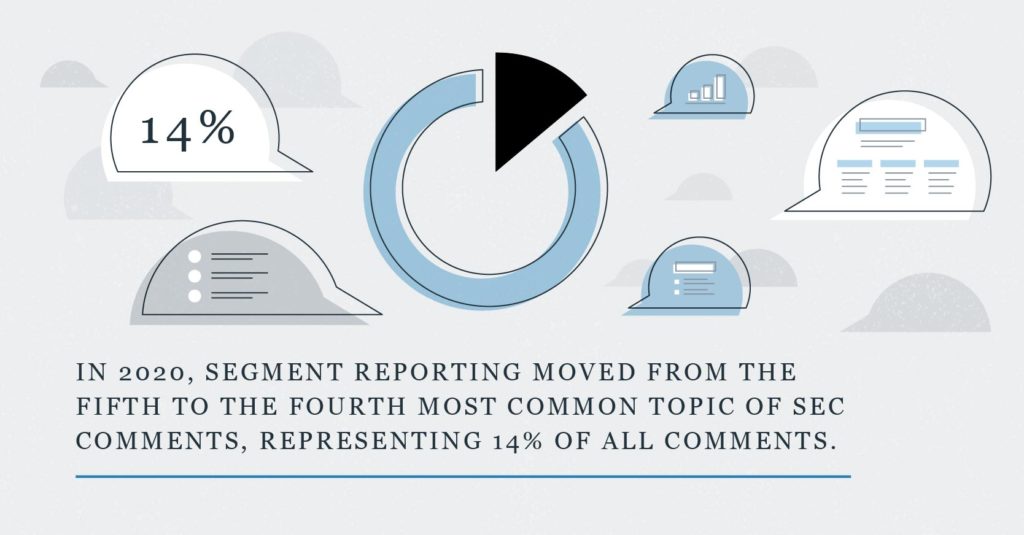
When companies are ready to go public, they’re often surprised by the increased reporting demands during and following the period of transition from a private entity. If the Securities and Exchange Commission (SEC) believes that a company’s registration statement and disclosures lack necessary information, it will issue comments requesting additional or amended documentation.
Segment reporting is often a key concern for companies looking to go public. As one of the more significant differences between private and public company requirements and a subjective area of financial reporting, companies should consider working with a knowledgeable IPO-readiness team to limit the risk of delaying the IPO timeline.
Segment reporting subjectivity can lead to SEC comments
A major difference between life as a private company and life as a public company is segment reporting. Companies that do not accurately reflect their segments within their disclosures risk receiving SEC comments that can drastically delay the IPO timeline.
The purpose of segment reporting is to help investors understand the structure of a company through management’s eyes. Proper segment reporting makes it possible to assess future cash flow and ultimately make informed investment decisions. When registering with the SEC, companies need to identify their reportable operating segments, provide disclosures for each segment and offer entity-wide disclosures.
Compared with other topics that can trigger SEC comments, segment reporting can be subjective. How management views the company may be nuanced and complex. Keep in mind that the SEC will not only inspect the company’s registration statement and disclosures but also its marketing materials and other public-facing information as it reviews and comments on filings. Misalignment between information sources will send up red flags — and that means comment letters that can significantly set back the IPO timeline.
More segment reporting comments in 2020
In 2020, segment reporting moved from the fifth to the fourth most common topic of SEC comments, representing 14% of all comments. In recent years, the overall volume of comments has decreased, yet segment reporting remains a common pitfall. In recent years, comments have addressed a familiar set of issues:
- The identification of operating segments.
- The aggregation of operating segments to reportable segments.
- Changes to reportable segments.
- Justifications for entities with a single segment.
- Entity-wide disclosures.

In many cases, SEC comments request more information about a company’s reportable segments. That means it is essential to understand the disclosure requirements ahead of the completion of the company’s audit and filing of a registration statement. Remember, the SEC can take up to a month to respond with comments on a submitted filing, and repeat comments can add weeks to the IPO timeline. Partnering with an expert financial advisory firm can help to reduce the likelihood of receiving comments altogether.
Why segment reporting triggers SEC comments
Segment reporting requirements are defined by the Financial Accounting Standards Board Accounting Standards Codification Topic 280. Segment reporting can trigger SEC comments for several reasons:
- Identification of segments. At its core, segment reporting is intended to provide investors with management’s view of the company. As with every aspect of the registration process, these disclosures should help investors to make informed decisions. Improper identification of segments can lead to a prolonged cycle of comments and replies until the SEC is satisfied with the segment definitions.
- Aggregation of segments. In certain circumstances, registrants may aggregate their operating segments into a single segment. Generally, segments are considered to share economic characteristics in respect to the nature of their products and services, the methods used to distribute them and the regulatory environment in which the segments operate. Because there is no general definition of a similar segment, it’s important to provide clear context around how the decision to aggregate segments was made.
- Changes in reportable segments. The SEC expects companies to continually monitor and address changes that affect the shape of their segments or the aggregation thereof. Segment information that is disclosed should be comparative. That means that any time a significant change occurs, the company must recast its previously reported segment information.
- Entity-wide disclosures. Companies must provide disclosures across the entity about products and services and geographic regions. These disclosures include revenues and long-lived assets disaggregated by country. Companies must also report the total revenues from customers for each product or service group. Keep in mind that these disclosures are only required for annual periods.
By working with an IPO-readiness team, companies can work to ensure that they address each of these concerns before registering with the SEC. If the company does receive comments, a knowledgeable financial advisory partner can help to resolve the issues in a timely manner.
Segment reporting comments can significantly delay the IPO process
Multiple rounds of SEC comments can quickly derail the IPO timeline. By working with a partner like CFGI, companies can reach their goal of going public on time. Our teams bring Big Four experience and a collaborative approach to everything we do. We’ve been down the road to IPO many times, and we understand how to avoid roadblocks like SEC comments.
If your goal is to transition to life as a public company in the next one to two years, the time for waiting is over. Get in touch with the experts at CFGI to learn more.
